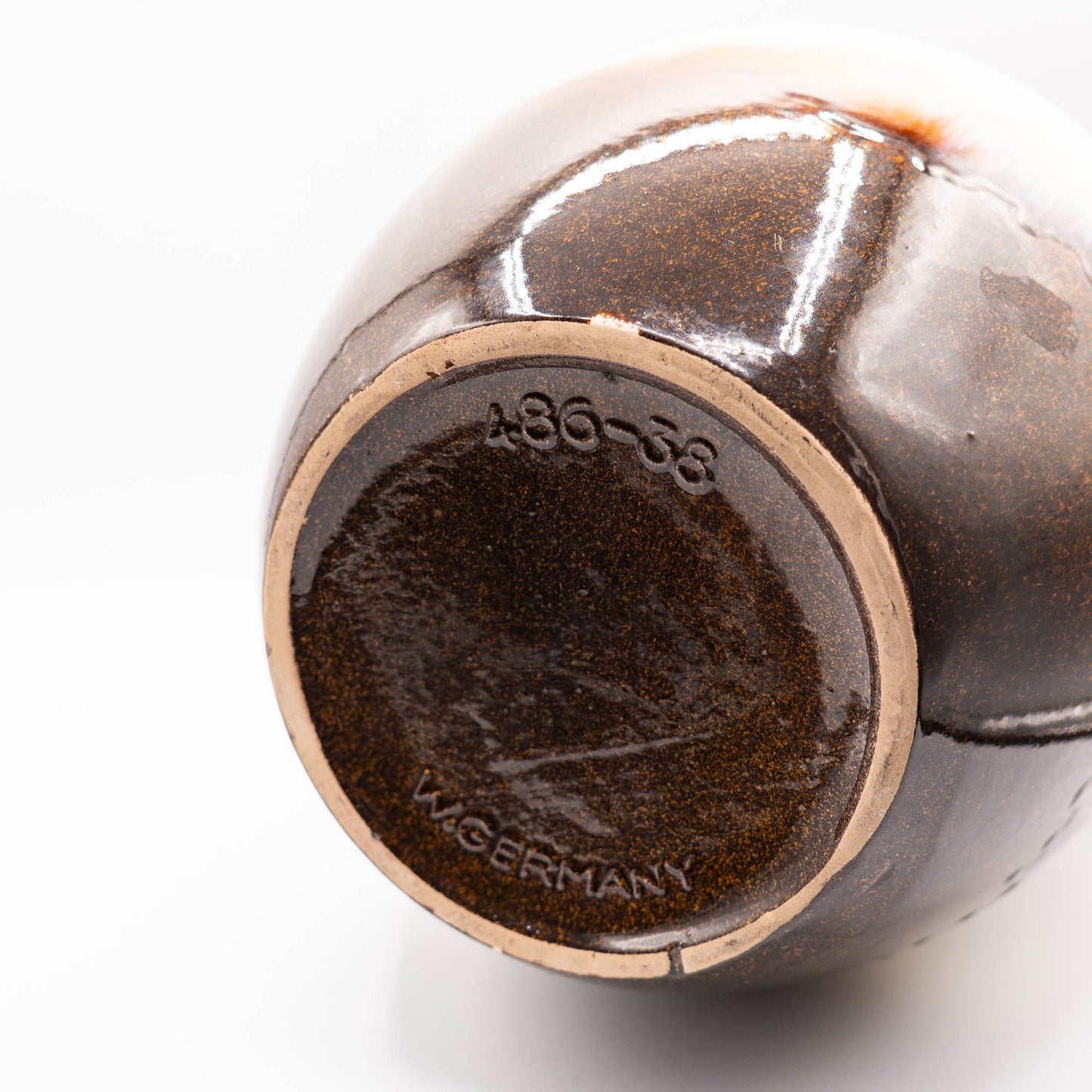Scheurich
Stunning and heavy Mid-Century Brown Floor Vase - Scheurich - Form 486-38 - 1970s
Stunning and heavy Mid-Century Brown Floor Vase - Scheurich - Form 486-38 - 1970s
Couldn't load pickup availability
Introducing a stunning Scheurich mid-century floor vase, model 486-38, embodying the essence of 1970s German ceramic artistry. Standing at an impressive 38 cm (14.9 inches) in height and weighing 4 kg, this substantial piece commands attention in any space.
The vase showcases a masterful drip glaze technique: the lower portion features a glossy dark brown finish, transitioning seamlessly to a light brown and tan matte glaze on top. This harmonious blend of textures and earthy tones adds depth and character to the piece. The base bears the mark "W. Germany 486-38," authenticating its origin and model. In perfect condition, this vase is a testament to Scheurich's renowned craftsmanship and timeless design.
This Scheurich floor vase is not just a decorative item; it's a piece of art that reflects the rich history of mid-century German ceramics. Its robust form and exquisite glaze make it a perfect addition for collectors and interior enthusiasts seeking to infuse their spaces with vintage charm.
- Material: Ceramic
- Model: Scheurich 486-38
- Pattern: Dripping glaze in light and dark brown
- Style: Mid-Century Modern
- Technique: Hand-glazed
- Place of Origin: Germany
- Mark: W. Germany 486-38
- Date of Manufacture: 1970s
- Condition: Perfect condition
Dimension:
Height: 38 cm | 14.9 in
Diameter: 30 cm | 11.8 in
Weight: 4 kg
Share
- Worldwide Shipping
- Secure Packaging
- Loving Curation










Origin & Maker
Scheurich, one of the most prominent names in West German pottery, was founded in 1928 and rose to fame during the mid-20th century. Known for its production of affordable yet high-quality ceramics, the company became a key player in the "Fat Lava" movement of the 1960s and 70s, characterised by bold textures and glazes. Scheurich’s extensive range of forms and designs, such as the popular "Form 242," showcased both hand-painted and moulded motifs, appealing to a wide audience. Their use of vivid colours, tactile surfaces, and intricate glazes made their pieces highly collectible today. Among their distinctive works, many vases, planters, and jugs are finished with deep, volcanic-like textures, giving them a timeless appeal.
One of the reasons for Scheurich's enduring success was their ability to innovate while maintaining affordability. Their design approach often drew inspiration from nature, incorporating organic shapes and motifs, with some pieces reminiscent of majolica in their glaze techniques. The company remains a celebrated name among collectors of mid-century and West German pottery, with many pieces, especially from the "Fat Lava" era, still in high demand.
Blog posts
View all-

A Serendipitous Morning at the Rue de Bretagne ...
There are few joys in life that match the thrill of stumbling upon a hidden treasure, and for me, flea markets hold that magical allure. One of my favourite flea...
A Serendipitous Morning at the Rue de Bretagne ...
There are few joys in life that match the thrill of stumbling upon a hidden treasure, and for me, flea markets hold that magical allure. One of my favourite flea...
-

Emile Bourgeois and "Le Grand Dépôt" in Paris
Recently, I found this stunning Sarreguemines wash set. It was at the Brocante in Belfort, France. On this day, we had got up at 4 AM to be there in...
Emile Bourgeois and "Le Grand Dépôt" in Paris
Recently, I found this stunning Sarreguemines wash set. It was at the Brocante in Belfort, France. On this day, we had got up at 4 AM to be there in...
-

The Legacy of Robert Haviland: A Journey from N...
The story of Robert Haviland porcelain is one of artistry, transatlantic ambition, and enduring heritage. It begins in the mid-19th century when David Haviland, an enterprising New Yorker, founded Haviland...
The Legacy of Robert Haviland: A Journey from N...
The story of Robert Haviland porcelain is one of artistry, transatlantic ambition, and enduring heritage. It begins in the mid-19th century when David Haviland, an enterprising New Yorker, founded Haviland...













